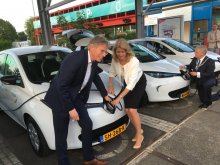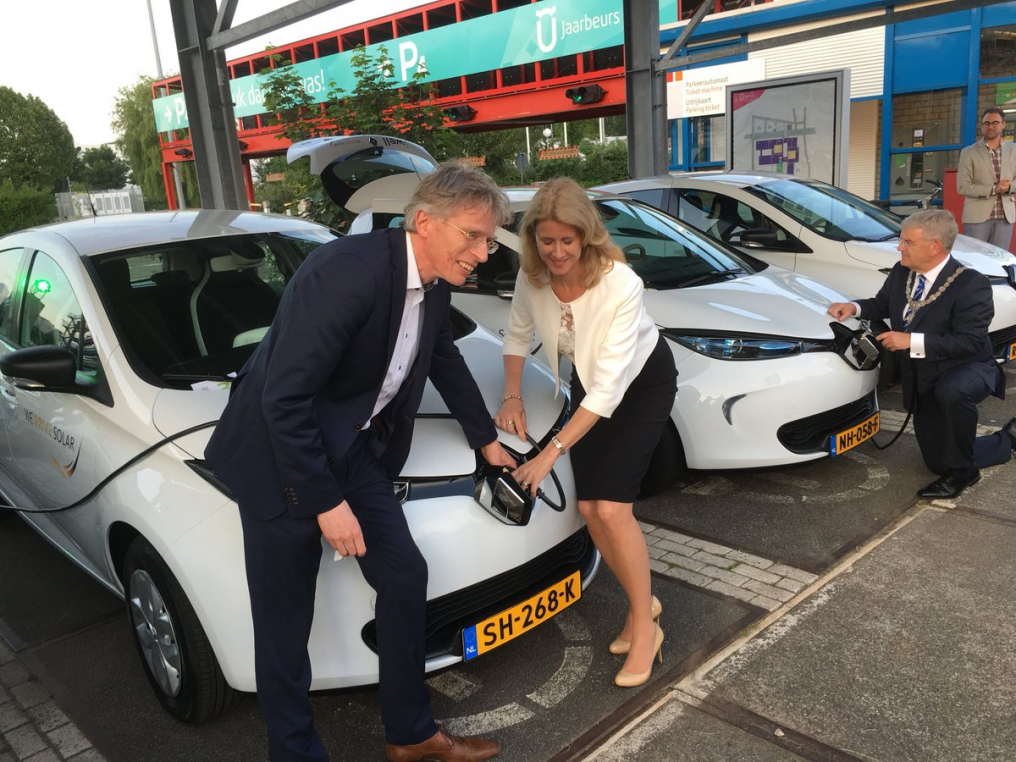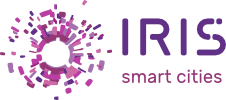
On Wednesday 23 May Utrecht witnessed a European first: 20 full electric vehicles got charged with solar power – simultaneously and after sunset. The event took place at the parking lot of the Jaarbeurs. The Utrecht mayor Jan van Zanen was present, together with the Secretary of State Mona Keijzer (Economic Affairs and Climate). Both spoke approvingly, as the surrounding press and visitors got a peak at the energy system of the future.
The Smart Solar Charging demonstration involved 200 solar panels, twenty charging stations for EVs and a big battery – the last inaugurated and first used this evening. The battery enables grid operators to match supply and demand of renewable energy. With a capacity of almost 1MWh it has enough power to charge twenty full electric cars simultaneously with stored solar energy. Even when the sun doesn’t shine.
Carolien van Hemel, director of the Utrecht Sustainability Institute, spoke about the tight relation between the Smart Solar Charging demonstration at the Jaarbeurs and the IRIS project taking place a little further up north, in the Utrecht district Kanaleneiland-Zuid. “We can learn here how this smart energy system works. And we can implement the lessons learned in the IRIS project in Kanaleneiland-Zuid, where we can bring this to the next level.”
Van Hemel explained about the inner workings of the smart energy system: “These innovations evolve around three questions: How can we reduce the energy demand in buildings? How can we move towards clean and sustainable mobility, which should cost less than owning a private car? And how can we tie in local production of renewable energy? The solution should be thus that we no longer produce oversupply of solar energy when the sun shines, which so greatly diminishes the efficiency of our energy production. We have to catch and store those energy surpluses, to be able to return them when energy demand is highest and when the prices go up. The key is the interaction between mobile batteries in cars and a large-scale stationary battery, like the one launched this evening.”
Van Hemel also commented on the crucial difference between smart innovations at Jaarbeurs and Lombok – where the first Smart Solar Charging demonstrations took place – and the IRIS project in Kanaleneiland-Zuid: the social context: “Worthy of special attention for IRIS is that the residents and users of these solar panels, cars and batteries are different in Lombok and Jaarbeurs than in the IRIS city district. We always need to take the users into account and involve them in the process of innovation.”
Report by Joppe van Driel

24 May 2018

